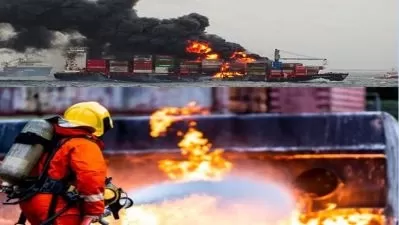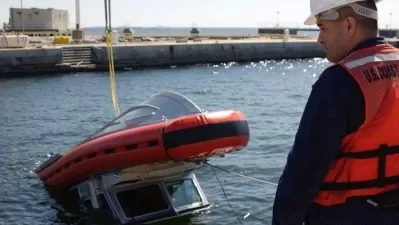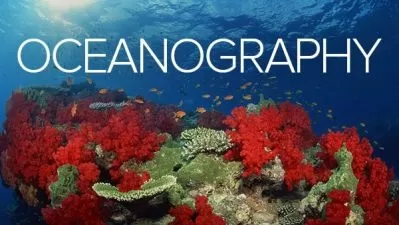Marine Navigation for Seafarers
6:46:42
Description
Principles and Practicles of Navigation
What You'll Learn?
- Learn the Definition of Navigation. Publications and Equipment required onboard a ship for safe navigation.
- Methods of navigation and how to become a good navigator by using various navigational equipment in the bridge
- Learn the ROR (Rules of the road - The International Regulations for the Prevention of Collision at Sea, 1972) and light signals at night
- Learn safe way of maneuvering vessels (E.g. ships, boats, tugs, fishing vessels or any water craft) from one place to another on the water.
Who is this for?
What You Need to Know?
More details
DescriptionNavigation is a safe way of maneuvering vessels (E.g. ships, boats, tugs, fishing vessels or any water craft) from one place to another on the water. This course explains about navigation on the water.
Navigation is an Art and a Science of conducting a ship from one place to another. Navigators must refer to various nautical publications and operate different types navigational equipment carried onboard a vessel for this purpose.
Every navigator must have thorough knowledge about the ROR (Rules of the road - The International Regulations for the Prevention of Collision at Sea, 1972). He or she should remember these rules by heart and should know how to apply the rules when a vessels are in sight of one another during a head on situation, crossing situation, overtaking situation, towing situation, not under command situation, passing seperation zones, passing narrow channels and at anchor. These rules must be used by each and every navigator effectively for safe navigation at sea.
Entered into force 15th July 1977.
Course is devided into various Lectures. They are
Definition of Navigation,
Rules of the road (ROR),
Latitude , Longitude, Distance at sea and on land,
Distance at sea from one port to another, calculate ETA
British Admiralty Metric Charts
Marine Navigation Technique
Course and Distance calculation between two way points (Mercator Sailing)
Course and Distance calculation between two way points (Great Circle Sailing)
Methods of Navigation (Position fixing, Celestial Navigation, Coastal Navigation and GPS Navigation))
Methods of Navigation (Gyro Compass and Magnetic Compass)
Methods of Navigation (Compasses Error)
Methods of Navigation (True course to compass course conversion)
Radar (Introduction)
Fixing vessels position using Radar
Pilotage and Navigation
REQUIRED BOARDING ARRANGEMENTS FOR PILOT
IALA buoyage system Region A and B
Who this course is for:
- This course is designed for all seafarers who would like expand their knowledge in the subject Navigation and become a good navigator
- Navigation is a science and a safe way of manoeuvring a vessel by navigators on the water from one port to another port.
- Navigators must be certified, qualified persons who has followed an approved course at a maritime training college, who has sea going experience gained in handling the publications and gained experience in operating the navigational equipment onboard a sea going vessel ( Motor Vessel, Boat, Tug)
- All those who are physically fit with a clean bill of health and a very good eye sight
- Navigators must be fluent in reading, writing and spoken in english. Should be able to operate various navigational equipment in the bridge
Navigation is a safe way of maneuvering vessels (E.g. ships, boats, tugs, fishing vessels or any water craft) from one place to another on the water. This course explains about navigation on the water.
Navigation is an Art and a Science of conducting a ship from one place to another. Navigators must refer to various nautical publications and operate different types navigational equipment carried onboard a vessel for this purpose.
Every navigator must have thorough knowledge about the ROR (Rules of the road - The International Regulations for the Prevention of Collision at Sea, 1972). He or she should remember these rules by heart and should know how to apply the rules when a vessels are in sight of one another during a head on situation, crossing situation, overtaking situation, towing situation, not under command situation, passing seperation zones, passing narrow channels and at anchor. These rules must be used by each and every navigator effectively for safe navigation at sea.
Entered into force 15th July 1977.
Course is devided into various Lectures. They are
Definition of Navigation,
Rules of the road (ROR),
Latitude , Longitude, Distance at sea and on land,
Distance at sea from one port to another, calculate ETA
British Admiralty Metric Charts
Marine Navigation Technique
Course and Distance calculation between two way points (Mercator Sailing)
Course and Distance calculation between two way points (Great Circle Sailing)
Methods of Navigation (Position fixing, Celestial Navigation, Coastal Navigation and GPS Navigation))
Methods of Navigation (Gyro Compass and Magnetic Compass)
Methods of Navigation (Compasses Error)
Methods of Navigation (True course to compass course conversion)
Radar (Introduction)
Fixing vessels position using Radar
Pilotage and Navigation
REQUIRED BOARDING ARRANGEMENTS FOR PILOT
IALA buoyage system Region A and B
Who this course is for:
- This course is designed for all seafarers who would like expand their knowledge in the subject Navigation and become a good navigator
- Navigation is a science and a safe way of manoeuvring a vessel by navigators on the water from one port to another port.
- Navigators must be certified, qualified persons who has followed an approved course at a maritime training college, who has sea going experience gained in handling the publications and gained experience in operating the navigational equipment onboard a sea going vessel ( Motor Vessel, Boat, Tug)
- All those who are physically fit with a clean bill of health and a very good eye sight
- Navigators must be fluent in reading, writing and spoken in english. Should be able to operate various navigational equipment in the bridge
User Reviews
Rating

Udemy
View courses Udemy- language english
- Training sessions 30
- duration 6:46:42
- Release Date 2024/12/21










